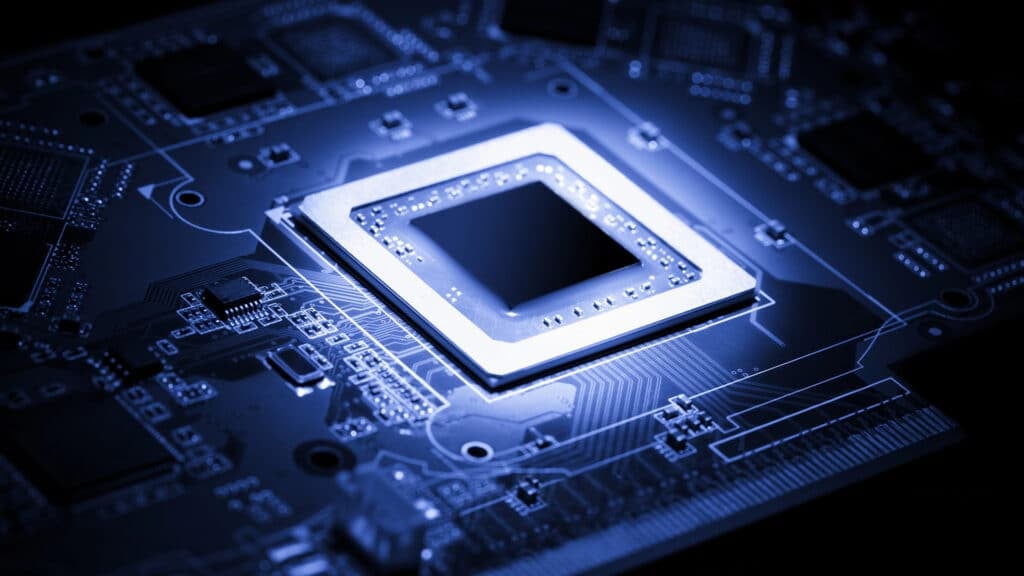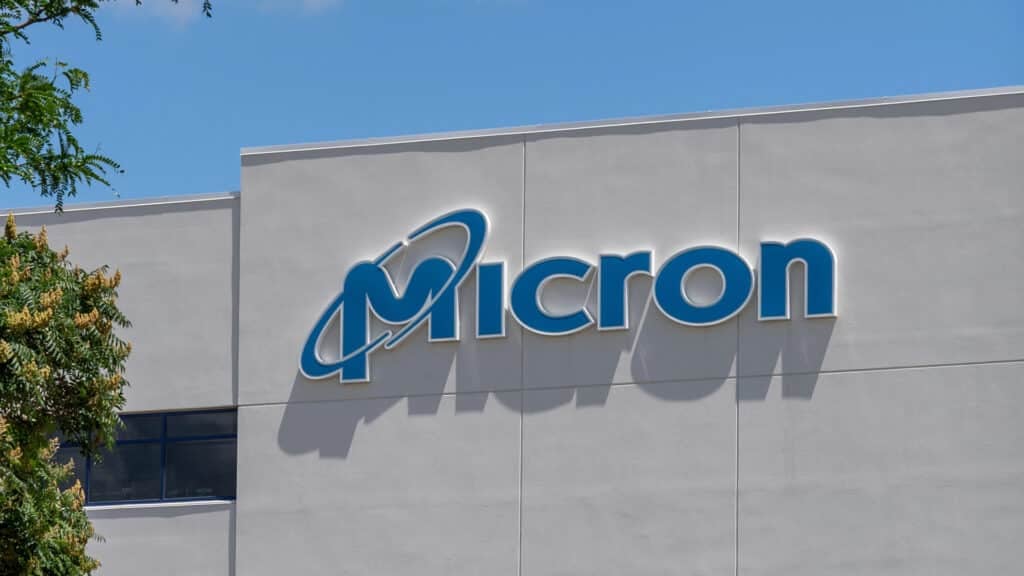The News: HP Inc. and its subsidiaries announced financial results for fourth quarter (Q4) 2023 with the company reporting revenue of $13.8 billion, down 6.5% from the prior-year period (-5% in constant currency). HP’s Q4 2023 numbers nonetheless signaled continued sequential growth, which tracks with the PC and device markets’ broad trend toward steady recovery.
Net revenue for the year was $53.7 billion, down 14.6% from the prior-year period (-12% in constant currency), but fiscal 2023 generally accepted accounting principles (GAAP) diluted net earnings per share (EPS) was $3.26, up from $2.98 in the prior-year period and above the previously provided outlook of $2.95 to $3.07. Fiscal 2023 non-GAAP diluted net EPS was $3.28, down from $3.98 in the prior-year period and within the previously provided outlook of $3.23 to $3.35. The full press release is available on the HP Inc. investor news page.
HP Q4 2023 Earnings Point to Market Recovery for the PC Segment
Analyst Take: HP’s FY Q4 2023 revenue of $13.8 billion signals the continuation of the trend toward market recovery. For starters, the figure builds on Q3’s $13.2 billion performance. Perhaps more important, however, Q4 revenue reflects only a 6.5% (-5% in constant currency) year-over-year (YoY) drop compared with Q3’s 9.9% (-7.4% in constant currency) YoY shortfall. What these numbers suggest is that while persistent macroeconomic headwinds, inflationary pressures, and stubbornly slow-moving inventories are still acting as a drag on certain segments of the tech sector, and particularly hardware and device-focused businesses, that drag has been eroding steadily quarter after quarter. Key growth areas collectively grew revenue 10% quarter-over-quarter (QoQ), 2x faster than total revenue.
Q4 2023 numbers at a glance:
- Q4 2023 net revenue of $13.8 billion, down 6.5% YoY
- Q4 2023 GAAP diluted net EPS was $0.97, above the previously provided outlook of $0.65 to $0.77 per share
- Q4 2023 non-GAAP diluted net EPS of $0.90, within the previously provided outlook of $0.85 to $0.97 per share
- Q4 2023 net cash provided by operating activities of $2.0 billion, free cash flow of $1.9 billion
- Q4 2023 returned $0.3 billion to shareholders in the form of dividends
Personal Systems: Improving Sequential Growth Leading into 2024 Lays the Stage for AI PCs
Personal Systems net revenue was $9.4 billion, down 8% (-7% in constant currency) YoY. Operating margin was 6.7%. Consumer PS net revenue was only down 1% while Commercial PS net revenue was down 11%. Total units remained flat with Consumer PS units up 9% and Commercial PS units down 6%.
Here too, we find improving revenue and steadily normalizing YoY trending. (In Q3, Personal Systems net revenue was a slightly weaker $8.9 billion, and down 11%, -8% in constant currency) YoY. Operating margin remained relatively steady at 6.7%.
Note the significant YoY improvement in Consumer PS in Q4 compared with Q3, with the segment only being down 1% to Q3’s 12% YoY drop. Commercial PS remained constant with Q3’s 11% YoY deficit persisting into Q4. The road to recovery therefore is not as smooth or symmetrical as it could be. At least not just yet. The good news is that HP’s total PC unit shipments looked flat YoY, which is wonderful, considering the slump that the industry is still struggling to emerge from. Adding to this positive recovery indicator, HP’s Consumer PS segment saw an encouraging 9% YoY growth. The Commercial PS segment, however, still failed to find its feet last quarter, lagging at -6% YoY. This asymmetry in the segments’ recovery should be ironed out around the start of H2 2024, when the next generation of AI-ready PCs (AI PCs) starts to gain traction at scale in the market.
Printing: Q4 Revenue of $4.4B Strains to Find Solid Growth — Could New AI Features Drive Demand in 2024?
Printing net revenue (which accounts for about 32% of net revenue) was $4.4 billion, down 3% (-2% in constant currency) YoY. Operating margin was 18.9%. Broken down into Consumer and Commercial Printing, Consumer Printing net revenue was down 21% while Commercial Printing net revenue was only down 4%. Supplies net revenue was up 3% (up 4% in constant currency), however. Total hardware units were down 19% with Consumer Printing units down 18% and Commercial Printing units down 24%.
Here too, we find a mixed bag of crosswinds, mostly. The somewhat encouraging news is that, as with Personal Systems, HP’s Printing business posted a slight QoQ improvement (Q3 revenue was $4.3 billion), and the YoY downturn also seemed to ease a bit compared with Q3 (down 3% in Q4 compared with 7% in Q3.) Along the same vein, Consumer Printing was only down 21% in Q4 compared with Q3’s 28%, and Commercial Printing revenue went up from being 6% down YoY in Q3 to only being down 4% YoY in Q4. All of this data tells us that headwinds are easing and shifting into crosswinds. Q3’s total hardware units numbers remained steady at -19% compared with the same period a year ago, but the mix changed a bit, with Consumer Printing units down 18% YoY (compared with Q3’s -19% YoY). But what caught my eye was that Commercial Printing units were down a full 24% YoY (compared with Q3’s -8% YoY).
As I pointed out in Q3, printing is still a $4+ billion strong quarterly business for HP, but despite easily holding on to the lion’s share of the global printer market, three critical obstacles still stand between HP and a return to growth for its successful printing business: WFH, which makes printing documents less of an operational necessity at scale; the ESG-driven shift to paperless operations, which brings additional layers of environmentally conscious best practices to document creation, distribution, and storage; and the digitization of everything, including paperless document signing.
Efforts by many organizations to bring workers back into physical offices could help slow the decline in printing demand we have seen over the past 3 years, but HP’s commercial printing unit numbers for Q4 do not appear to reflect that shift yet. Unlike the PC segment, which I feel will be invigorated by the at-scale introduction of AI PCs, the printer segment does not currently have a significant – or proportional – AI-enhanced product pipeline to reverse its downward trend. This situation is likely to change as innovative on-device AI features bring much needed functionality and renewed relevance to consumer-facing and commercial printers.
HP’s FY 2023 Recap
Looking back at fiscal 2023, net revenue totaled $53.7 billion (down 14.6% from FY 2022). No surprises there. Personal Systems revenue for the year amounted to $35.7 billion (down 19% YoY, or 16% in constant currency), while Printing revenue amounted to $18 billion (down 5% YoY, or 3% in constant currency). On the whole, I feel that the sequential growth seen in Q3 and Q4 is far more indicative of where HP and the market as a whole are performing ahead of FY 2024 than FY 2023 as a whole, which was marked with severe disruptions and market headwinds. One FY 2023 data point I found worthy of note, however, is that revenue from key growth areas grew mid-single-digit YoY to approximately 20% of total revenue. Make a mental note, as I will likely revisit this point in future HP earnings coverage.
FY 2023 numbers at a glance:
- Fiscal 2023 net revenue of $53.7 billion, down 14.6% YoY
- Fiscal 2023 GAAP diluted net EPS of $3.26, above the previously provided outlook of $2.95 to $3.07 per share
- Fiscal 2023 non-GAAP diluted net EPS of $3.28, within the previously provided outlook of $3.23 to $3.35 per share
- Fiscal 2023 net cash provided by operating activities of $3.6 billion, free cash flow of $3.1 billion
- Fiscal 2023 returned $1.1 billion to shareholders in the form of dividends and share repurchases
HP Q4 2023 and FY 2023 Key Takeaways
FY Q4 2023 delivered another quarter of sequential growth, with HP continuing to combine effective innovation with disciplined cost controls and execution to deliver profitable PC market share and achieve its non-GAAP EPS target.
Despite HP’s ability to drive long-term growth and value creation, lingering market conditions continue to act as a brake against recovery and net positive growth, particularly for the Printing segment. I expect continued sequential growth into H1 2024, at least for HP’s Personal Systems business, with a likely uplift beginning with the holiday season, then accelerating as AI-ready PCs begin to gain traction in the spring. I continue to feel that HP’s focus on high-margin and high-ASP segments (high-performance workstations, gaming PCs, accessories, and AI-enabled conference room peripherals) will remain a winning strategy into 2024 as the market demand continues to shift toward solutions with on-chip AI-enhanced features and capabilities.
HP’s Printing business remains strong but while the segment was overdue for a correction, negative sequential trending, particularly in Q4, could be cause for concern. Although it seems unlikely that Printing will return to pre-2019 numbers anytime soon, thanks to the success and proliferation of paperless and more sustainable operational models, HP has opportunities to re-invent the printing segment for commercial applications as well as for the consumer side of its business.
On the one hand, I see HP leaning harder into circularity, upcycling, and sustainable supply chains, a possible paradigm shift for the company’s printing business on the commercial side, which could generate higher profit margins and higher market share for the company even as demand for new printing solutions continues to level down. On the other hand, injecting powerful new AI-enhanced features into product design could help not only redefine printers and printing UX for consumers and enterprise users but also reinvent the segment for the age of AI. Overall, I feel mostly positive about these earnings and feel that HP continues to be extremely well positioned to find its way back to net positive growth as the market continues to strengthen.
Daniel Newman and his co-host of The Six Five Webcast, Patrick Moorhead of Moor Insights and Strategy discussed HP’s latest earnings in their latest episode. Check it out here and be sure to subscribe to The Six Five Webcast so you never miss an episode.
Disclosure: The Futurum Group is a research and advisory firm that engages or has engaged in research, analysis, and advisory services with many technology companies, including those mentioned in this article. The author does not hold any equity positions with any company mentioned in this article.
Analysis and opinions expressed herein are specific to the analyst individually and data and other information that might have been provided for validation, not those of The Futurum Group as a whole.
Other insights from The Futurum Group:
HP Q3 2023 Earnings Show Accelerating Signs of Improvement
HP | Poly Studio X Family: The Pursuit of Meeting All Needs
Author Information
Olivier Blanchard is Research Director, Intelligent Devices. He covers edge semiconductors and intelligent AI-capable devices for Futurum. In addition to having co-authored several books about digital transformation and AI with Futurum Group CEO Daniel Newman, Blanchard brings considerable experience demystifying new and emerging technologies, advising clients on how best to future-proof their organizations, and helping maximize the positive impacts of technology disruption while mitigating their potentially negative effects. Follow his extended analysis on X and LinkedIn.





